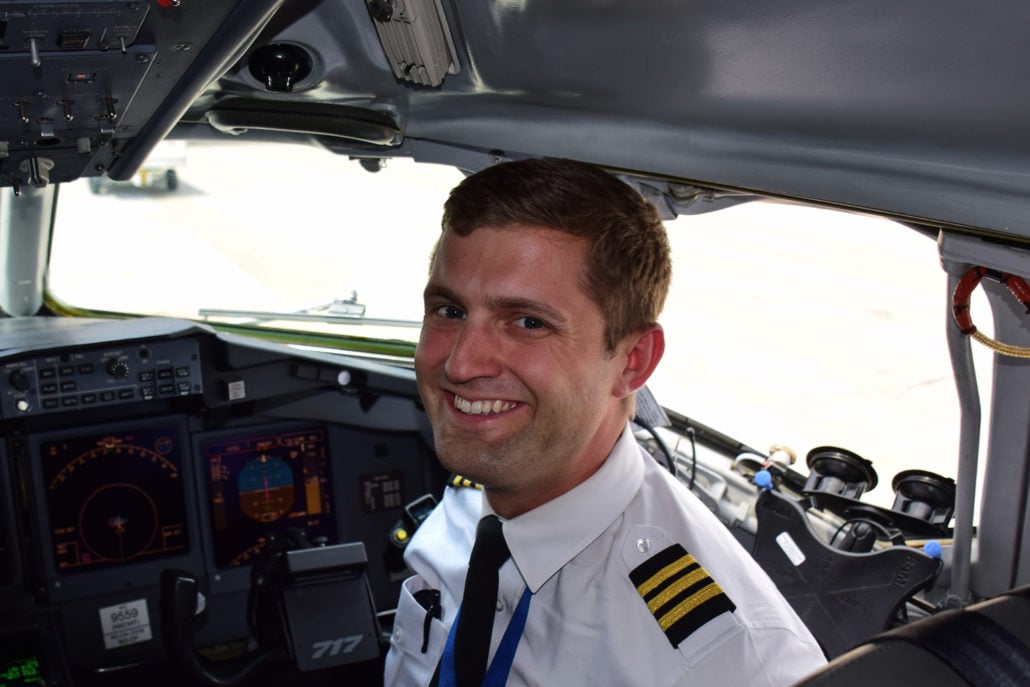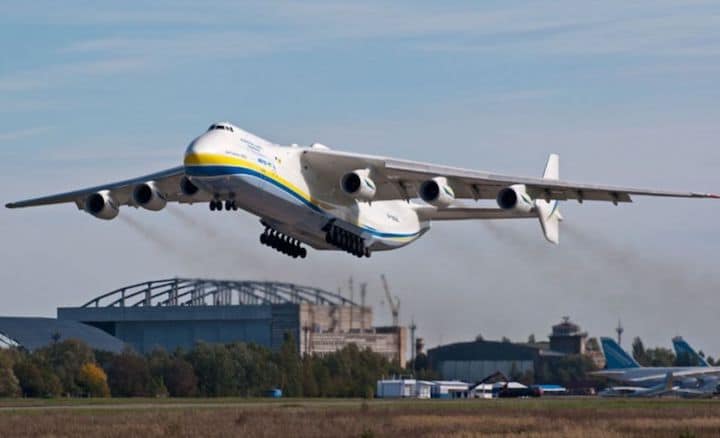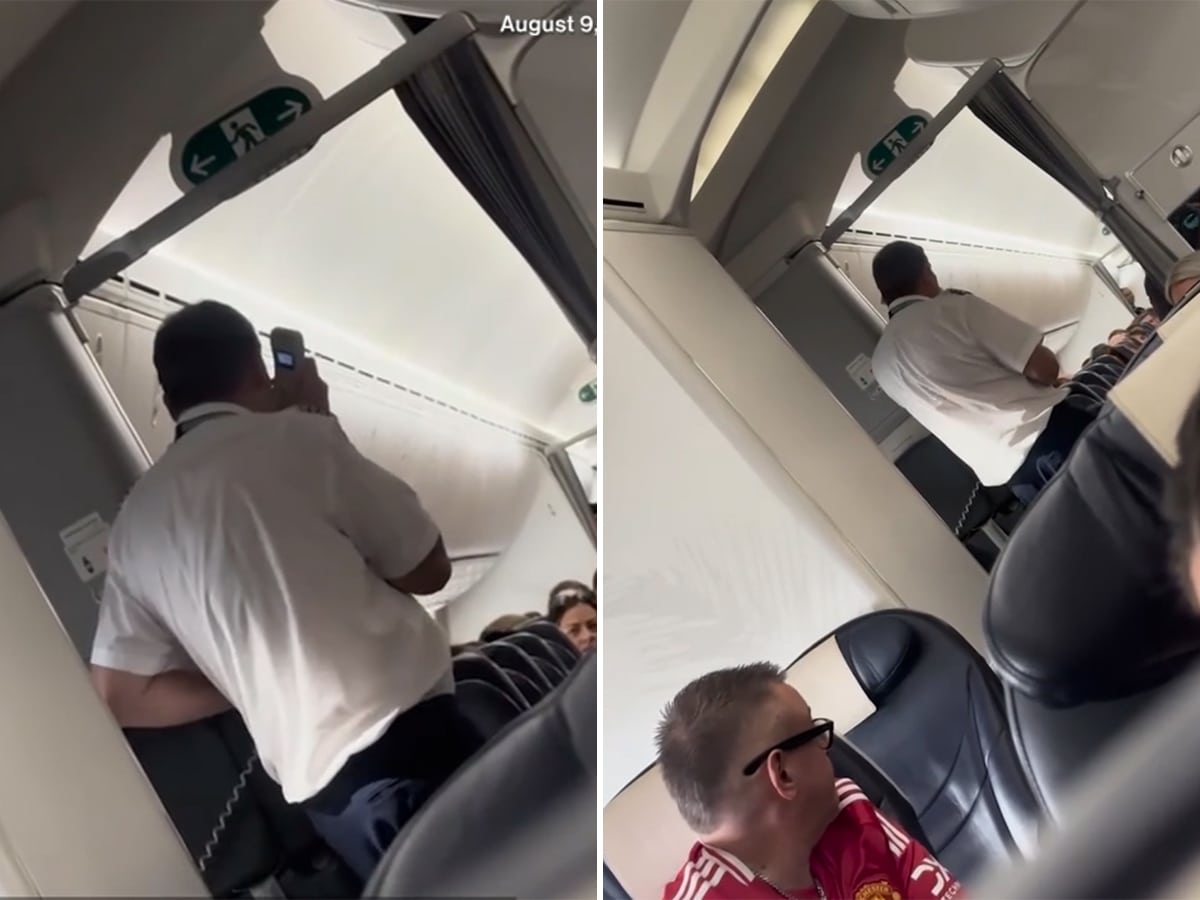
In our Ask a Pilot series, pilot Spencer Marker answers one of your aviation-related questions each week. See past installments here and submit your own to Whitney@johnnyjet.com.
Question
Hey Spencer, why do some airplanes have a handful of wheels and tires while some have a seemingly countless number? Is it because we don’t make tires strong enough?
—Paul Z.
Answer
Hey, Paul. Thank you so much for writing in for this week’s article. The configuration of an airplane’s landing gear depends on a couple of factors. Firstly, having numerous tires distributes the weight of the airplane more evenly across the pavement. Secondly, having numerous points of contact with the runway will increase the effectiveness of the airplane’s brakes. Let’s look at each of these points and check out some interesting (at least to me) wheel and tire configurations.

Tires and wheels
To the casual observer, commercial airplanes seem to have a standard tire configuration: two wheels at the nose and two under each wing. This arrangement can be found on airplanes from the turboprop Saab 340 to the Airbus A321 and many in between. In this common arrangements, the nose landing gear is used to steer the plane but lacks brakes. These are located in the main landing gear underneath the wing. This, however, is not the only option for airplane manufacturers. Modern airplanes today can have anywhere from a single tire to over 30!
So, why such a large variation in the number of wheels? As I’ve stated before, the reason is twofold: to distribute weight and increase stopping power.
As airplanes grow in size, the weight they exert must be shouldered by the pavement they’re riding on. For example, if a 747 were equipped with three large tires, it would cause the pavement to break and fail wherever it taxied. This immense weight focused on three points in the pavement is too much of a load. So the options are clear: Either increase the depth and strength of every taxiway and runway in the world, or add more tires to evenly distribute the weight. This is why the 747 has 18 wheels.
Fun fact: In its original form, the Cold War-era Convair B-36 bomber employed a single massive tire for each of its main landing gear legs. After it chewed up numerous miles of pavement, this was changed to a more sensible four-tire arrangement on each main landing gear. The airplane was also tested with tank-style tracks instead of tires.
Braking
In addition to more effectively spreading the weight of an aircraft on the pavement, having multiple tires also increases the effectiveness of the brakes.
On nearly all aircraft, the main landing gear under the wing contains all the brakes used to stop the airplane. So if an airplane needs to land on a short runway or stop very quickly, having more brakes is better. For instance, the Airbus A321 and Boeing 757 are roughly the same size. However the 757 employs four more tires and brakes than its Airbus counterpart. This enables the 757 to more easily land at challenging airports with short runways.
The Airbus A380 uses its 20 brakes as part of a novel brake-to-vacate system. To use this system, a pilot will program the Flight Management Computer (FMC) and select which taxiway they wish to use when exiting the runway after landing. When the airplane touches down, the brakes will automatically modulate to slow the airplane to taxi speed by that intersection.

Unique wheel arrangements
The A380—with its 22 tires—may seem like the record holder for number of wheels, but there is an airplane out there that employs more. The gigantic Ukrainian Antonov An-225 cargo jet uses 32 wheels to spread out its immense 1.4 million pounds. This airplane is extremely rare, as only one was ever built. However, after decades of being partially completed, a second is being finished in their Kiev factory.
Airplanes like the Boeing B-52 make use of a bicycle-type landing gear arrangement. In this configuration, the main landing gear are located in tandem (one in front of the other) on the fuselage, while smaller outrigger wheels are located on the wing tip to prevent tipping during turns on the ground.
The U-2 spy plane also makes use of a bicycle arrangement, but differs from the B-52 in that it has a single main landing gear and tiny tail landing gear. The airplane has a reputation for being very difficult to land, requiring the use of a spotter in a fast car to chase it down the runway to aid in landing. Tech Insider has a great YouTube video showing just how complicated landing a U-2 is!

To sum up
Thanks for the question, Paul. The wheels and tires an airplane employs not only help distribute the weight of an airplane across the surface more evenly, but also aid in stopping the jet after landing. As airplanes evolve and become more specialized, landing gear arrangements will also change. And instead of larger tires for larger airplanes, designers will use more tires on larger airplanes.
Thanks again! Remember, if anyone has a burning aviation question or something you would like cleared up, drop us a line at Whitney@johnnyjet.com to get your question featured in an upcoming Ask a Pilot column.
Tailwinds,
—Spencer








Thank you for all this fantastic information about aircraft! It’s interesting that an airplane can have anywhere from 1 to 30 tires! It’s nice to know that the plane will have all the support it will need.
But which aircraft had 25 wheels?